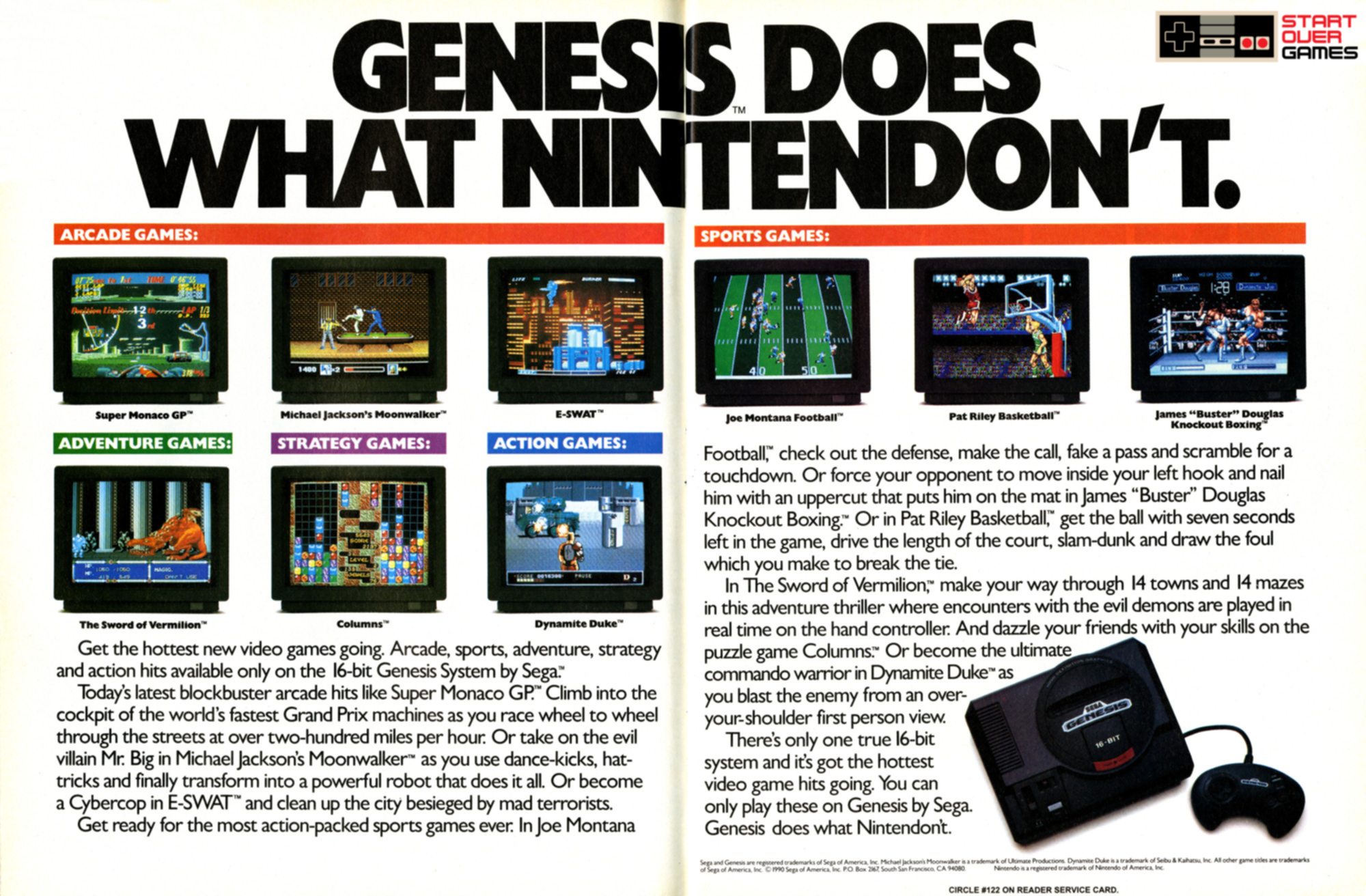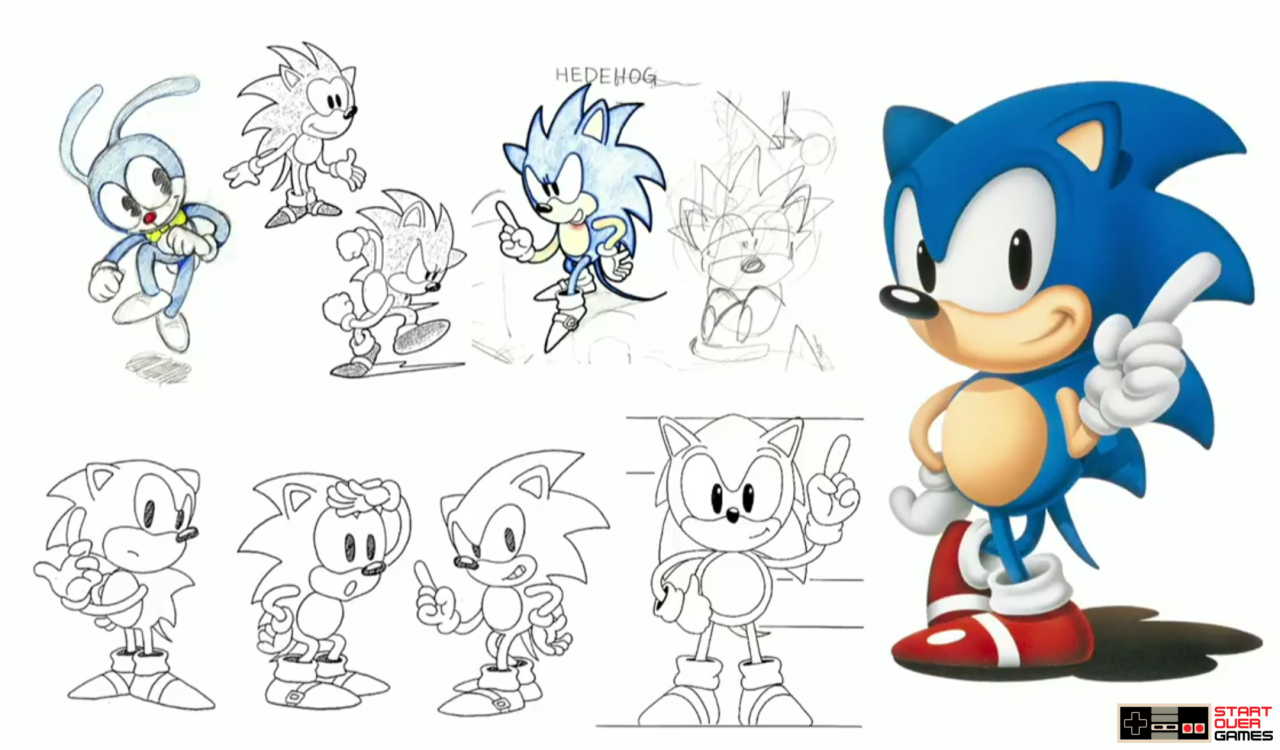(Posted on August 29th 2016, this article covers the creation of Sonic the Hedgehog.)
Ask anyone who the most recognizable video game character of all-time is, and nine times out of ten Mario’s name will come up. Nintendo’s red and blue plumber rose to the top during the late 1980s and to this day has never been dethroned. Over the years Mario would face plenty of competition though, and one of his biggest battles for iconic supremacy took place against a blue hedgehog created by Nintendo’s biggest rival, Sega.
In 1989 Sega chose to release their third home console, the Sega Genesis. It had released one year earlier in Japan, stuttering at its launch due to Super Mario Bros. 3 being released at the same time. And even with positive coverage and reviews, it was not able to overtake Nintendo’s Famicom as the number one Japanese console. Sega would then set its sights on the American market with hopes of stronger sales. When the Genesis hit U.S. shores it was given a specific marketing campaign that would target the Nintendo Entertainment System, Sega’s biggest competitor. The campaign focused mostly on what the NES wasn’t. Commercials and ads often made note of how the Genesis was a 16-bit system while the NES was only 8-bit. They were also quick to mention how the Genesis contained “Blast Processing” which supposedly made it run better and smoother. (The jury is still out on that…) This was also when the phrase “Genesis does what Nintendon’t” would come to light. One of the most interesting parts of Sega’s Marketing campaign was how they named their games. Knowing that Nintendo had the most well-known games and characters in the United States, Sega chose to give their games names that Americans would recognize, like Michael Jackson’s Moonwalker, and Joe Montana Football. Despite all of this, it still wasn’t enough to get Nintendo off the top spot.
Sonic the Hedgehog was created for two reasons, to give Sega a recognizable figure and to compete with Mario. Up to that point the closest thing Sega had to a mascot was Alex Kidd, a character that looked like he was crossed between a human and a monkey. It wasn’t Alex Kidd’s look that made Sega question his ability as a mascot though, but rather his lack of charisma when compared to Nintendo’s Mario. To defeat Mario, Sega knew they would have to create something that had never been done in the world of video gaming before, and set out to do it.
The Sonic we know today is quite different from his original concepts, which included an armadillo, a rabbit, a dog and my personal favorite, a Teddy Roosevelt look-a-like that wore pajamas. (The Teddy look-a-like would later become Sonic’s nemesis, Dr. Eggman.) When none of the above fit the bill, Sega landed on a hedgehog for their character. He was made predominantly blue to match Sega’s logo, and wore shoes that were oddly enough inspired from shoes that Michael Jackson wore in his music videos. In the original concepts of Sonic, he was drawn with fangs and was in a band with his human girlfriend, Madonna. When Sega of America caught wind of this, they urged Japan to remove the girlfriend and fangs saying it would “soften up” Sonic and make him a more likable character. Japan, while not fully agreeing, did what was asked giving us the Sonic we know today.
Sega finally had a great looking mascot, but they weren’t done yet. As I’m sure we’ve all heard before, looks aren’t everything, and Sonic is no exception. For inspiration for Sonic's personality Sega used Bill Clinton’s “Get It Done” attitude. This shows up more in the cartoon series, but also fits well with how he acts in his games. Sonic was also designed to sink in water. This happened because Sonic’s creators believed hedgehogs could not swim, when in fact they can. Lastly, Sonic’s spin attack was based off of a hedgehog’s defensive position of curling up into a ball when threatened.
With that, Sega had their flag bearer. By 1991 Sonic found himself starring in his own game and competing against Nintendo’s Mario franchise. Not only did he compete, but he actually managed to win, for a while at least. Sonic did this during the 1991 holiday season when he actually managed to knock Mario and Nintendo off of their pedestal when the Sega Genesis outsold the Super Nintendo by almost 2 to 1. Sonic’s victory would be short-lived though. Nintendo would regain its top position, and while Sega held on as long as it could, it would eventually drop out of the console market.
One last thought to leave you with… Without Mario’s popularity Sonic would never had been created. So in a sense, Mario created his greatest competition.

